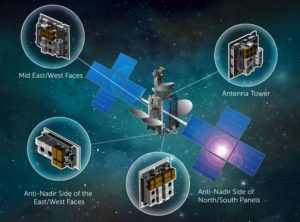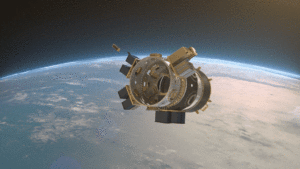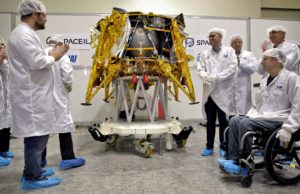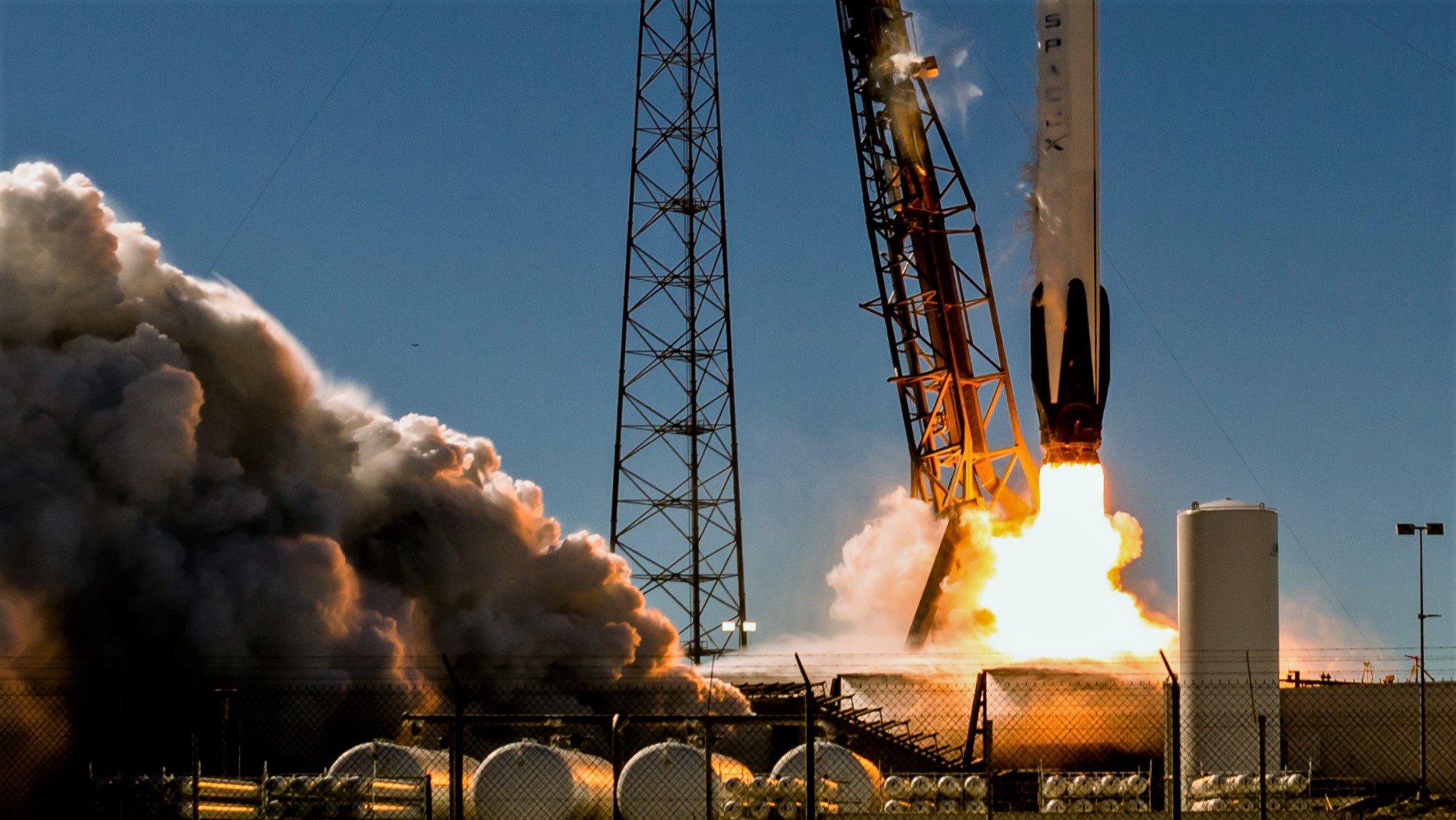

News
SpaceX nears Falcon 9’s first commercial interplanetary launch: a private Moon lander
Israeli aerospace company SpaceIL has reportedly completed the world’s first private Moon lander at the same time as the primary payload it will be tagging along with – Indonesia’s PSN-6 communications satellite – arrived in Cape Canaveral, Florida, where engineers will now prepare the spacecraft for a launch NET February 13th, 2019 atop SpaceX’s Falcon 9 rocket.
Recently crowned Beresheet (Hebrew for “Genesis”), the small ~600 kg (1300 lb) lunar lander will also be joined by an innovative new rideshare technology managed this time around by Spaceflight Industries, potentially giving small satellite (under 100 kg) customers the ability to tag along with a large geostationary communications satellite like PSN-6 to reach orbits far higher than those routinely accessible with rideshares and even dedicated launches.
The Indonesian satellite Nusantara Satu (PSN VI) has arrived at the Cape for its February launch on a SpaceX Falcon 9 (SSL Release: https://t.co/usuBQeq9Uz).
This is a shared launch with Spaceflight GTO-1/SpaceIL (Israel’s first mission to the moon): https://t.co/OvyNAc9qfP pic.twitter.com/Z8HDFDUCdX
— NSF – NASASpaceflight.com (@NASASpaceflight) December 20, 2018
While SpaceX is unaffiliated with SpaceIL, this mission will technically mark the first time that SpaceX has conducted a commercially-procured interplanetary launch, hopefully placing Beresheet (nicknamed “Berrie” by SpaceIL) on a direct trajectory to the Moon after sending PSN-6 on its way to geostationary orbit. The actual logistics of this unprecedented rideshare mission are unclear, but the most logical setup would see PSN-6 somehow integrated on top of SpaceIL’s Moon lander, allowing the communications satellite to be deployed into a geostationary transfer orbit before Falcon 9’s upper stage reignites to send Beresheet on an escape trajectory.
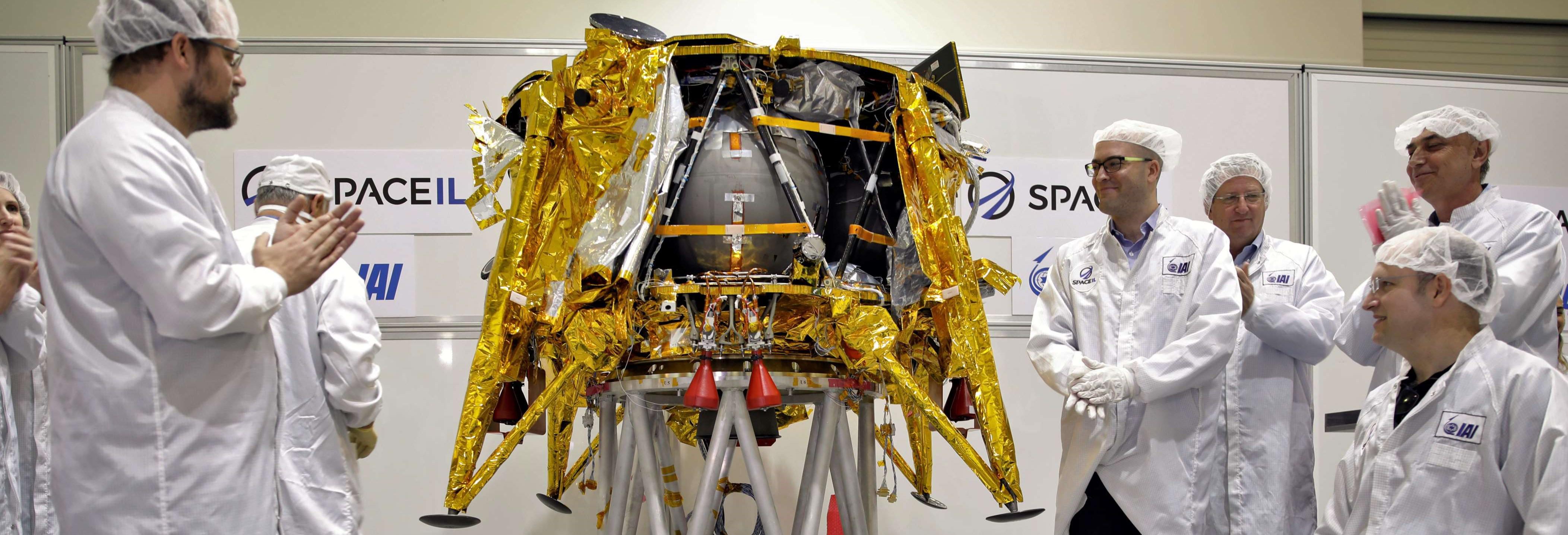
Assuming that is the case, this mission may also become the second time that SpaceX has utilized its Falcon 9 upper stage’s long coast capabilities on a commercial mission, as the rocket would need to remain operational at least several hours after deploying PSN-6 in order to reignite for Beresheet. It’s also possible that the PSN-6 satellite itself will play a role in sending Beresheet to the Moon or that the lunar lander will bring along its own boost stage to journey from GTO to lunar orbit, but both alternatives are improbable. Just last week, on December 22nd, SpaceX conducted its first true operational long-coast during the launch of the USAF’s first new GPS satellite, coasting for around 60 minutes between Merlin Vacuum (MVac) ignitions.
In February 2018, Falcon Heavy also demonstrated an even longer coast of ~6 hours during the heavy-lift rocket’s launch debut, allowing SpaceX to send Starman and his Tesla Roadster into an elliptical orbit around the sun, one end stretching out past the orbit of Mars.
- An overview of SSL’s PODS rideshare concept, showing the many possible locations where smallsat dispensers can potentially be attached to commsats. (SSL)
- Spaceflight’s SSO-A Upper Free Flyer visualized deploying cubesats shortly after launch on Falcon 9. PODS would be quite similar, albeit on a smaller scale. (Spaceflight)
- Beresheet is seen here prior to the spacecraft’s flight from Israel to Florida. (SpaceIL/IAI)
Aside from the already-unprecedented rideshare combo of a commercial communications satellite and an interplanetary spacecraft, the PSN-6 mission will further include an innovative new approach to satellite rideshare launches, potentially allowing unrelated smallsat operators the opportunity to piggyback on the commercial geostationary satellite missions that serve as a backbone of the private launch market. By piggybacking on larger satellites headed to geostationary orbit (35,786 km or 22,236 mi), smallsats may be able to reach truly unprecedented orbital heights – useful for science, commerce, and exploration – that could ultimately pave the way for independent interplanetary smallsat missions, leapfrogging off of high-energy geostationary orbits to head to nearby bodies like asteroids, Mars, Venus, and more.
There is also a chance that PSN-6 could launch on a flight-proven Falcon 9 rocket, an event that would mark the first time in history that a commercial interplanetary spacecraft reached orbit on a reused commercial rocket. Either way, FCC filings have already confirmed that Falcon 9 will attempt to land on drone ship Of Course I Still Love You (OCISLY) roughly 650 km (410 mi) off the Florida coast.
For prompt updates, on-the-ground perspectives, and unique glimpses of SpaceX’s rocket recovery fleet check out our brand new LaunchPad and LandingZone newsletters!
News
Tesla begins Robotaxi certification push in Arizona: report
Tesla seems serious about expanding its Robotaxi service to several states in the coming months.

Tesla has initiated discussions with Arizona transportation regulators to certify its driverless Robotaxi service in the state, as per a recent report from Bloomberg News. The move follows Tesla’s launch of its Robotaxi pilot program in Austin, Texas, as well as CEO Elon Musk’s recent comments about the service’s expansion in the Bay Area.
The Arizona Department of Transportation confirmed to Bloomberg that Tesla has reached out to begin the certification process for autonomous ride-sharing operations in the state. While details remain limited, the outreach suggests that Tesla is serious about expanding its driverless Robotaxi service to several territories in the coming months.
The Arizona development comes as Tesla prepares to expand its service area in Austin this weekend, as per CEO Elon Musk in a post on X. Musk also stated that Tesla is targeting the San Francisco Bay Area as its next major market, with a potential launch “in a month or two,” pending regulatory approvals.
Tesla first launched its autonomous ride-hailing program on June 22 in Austin with a small fleet of Model Y vehicles, accompanied by a Tesla employee in the passenger seat to monitor safety. While still classified as a test, Musk has said the program will expand to about 1,000 vehicles in the coming months. Tesla will later upgrade its Robotaxi fleet with the Cyercab, a two-seater that is designed without a steering wheel.
Sightings of Cybercab castings around the Giga Texas complex suggests that Tesla may be ramping the initial trial production of the self-driving two-seater. Tesla, for its part, has noted in the past that volume production of the Cybercab is expected to start sometime next year.
In California, Tesla has already applied for a transportation charter-party carrier permit from the state’s Public Utilities Commission. The company is reportedly taking a phased approach to operating in California, with the Robotaxi service starting with pre-arranged rides for employees in vehicles with safety drivers.
News
Tesla sets November 6 date for 2025 Annual Shareholder Meeting
The automaker announced the date on Thursday in a Form 8-K.

Tesla has scheduled its 2025 annual shareholder meeting for November 6, addressing investor concerns that the company was nearing a legal deadline to hold the event.
The automaker announced the date on Thursday in a Form 8-K submitted to the United States Securities and Exchange Commission (SEC). The company also listed a new proposal submission deadline of July 31 for items to be included in the proxy statement.
Tesla’s announcement followed calls from a group of 27 shareholders, including the leaders of large public pension funds, which urged Tesla’s board to formally set the meeting date, as noted in a report from The Wall Street Journal.
The group noted that under Texas law, where Tesla is now incorporated, companies must hold annual meetings within 13 months of the last one if requested by shareholders. Tesla’s previous annual shareholder meeting was held on June 13, 2024, which placed the July 13 deadline in focus.
Tesla originally stated in its 2024 annual report that it would file its proxy statement by the end of April. However, an amended filing on April 30 indicated that the Board of Directors had not yet finalized a meeting date, at least at the time.
The April filing also confirmed that Tesla’s board had formed a special committee to evaluate certain matters related to CEO Elon Musk’s compensation plan. Musk’s CEO performance award remains at the center of a lengthy legal dispute in Delaware, Tesla’s former state of incorporation.
Due to the aftermath of Musk’s legal dispute about his compensation plan in Delaware, he has not been paid for his work at Tesla for several years. Musk, for his part, has noted that he is more concerned about his voting stake in Tesla than his actual salary.
At last year’s annual meeting, TSLA shareholders voted to reapprove Elon Musk’s compensation plan and ratified Tesla’s decision to relocate its legal domicile from Delaware to Texas.
Elon Musk
Grok coming to Tesla vehicles next week “at the latest:” Elon Musk
Grok’s rollout to Tesla vehicles is expected to begin next week at the latest.

Elon Musk announced on Thursday that Grok, the large language model developed by his startup xAI, will soon be available in Tesla vehicles. Grok’s rollout to Tesla vehicles is expected to begin next week at the latest, further deepening the ties between the two Elon Musk-led companies.
Tesla–xAI synergy
Musk confirmed the news on X shortly after livestreaming the release of Grok 4, xAI’s latest large language model. “Grok is coming to Tesla vehicles very soon. Next week at the latest,” Musk wrote in a post on social media platform X.
During the livestream, Musk and several members of the xAI team highlighted several upgrades to Grok 4’s voice capabilities and performance metrics, positioning the LLM as competitive with top-tier models from OpenAI and Google.
The in-vehicle integration of Grok marks a new chapter in Tesla’s AI development. While Tesla has long relied on in-house systems for autonomous driving and energy optimization, Grok’s integration would introduce conversational AI directly into its vehicles’ user experience. This integration could potentially improve customer interaction inside Tesla vehicles.
xAI and Tesla’s collaborative footprint
Grok’s upcoming rollout to Tesla vehicles adds to a growing business relationship between Tesla and xAI. Earlier this year, Tesla disclosed that it generated $198.3 million in revenue from commercial, consulting, and support agreements with xAI, as noted in a report from Bloomberg News. A large portion of that amount, however, came from the sale of Megapack energy storage systems to the artificial intelligence startup.
In July 2023, Musk polled X users about whether Tesla should invest $5 billion in xAI. While no formal investment has been made so far, 68% of poll participants voted yes, and Musk has since stated that the idea would be discussed with Tesla’s board.
-

 Elon Musk1 week ago
Elon Musk1 week agoTesla investors will be shocked by Jim Cramer’s latest assessment
-

 Elon Musk3 days ago
Elon Musk3 days agoElon Musk confirms Grok 4 launch on July 9 with livestream event
-

 Elon Musk16 hours ago
Elon Musk16 hours agoxAI launches Grok 4 with new $300/month SuperGrok Heavy subscription
-

 News7 days ago
News7 days agoTesla Model 3 ranks as the safest new car in Europe for 2025, per Euro NCAP tests
-

 Elon Musk2 weeks ago
Elon Musk2 weeks agoA Tesla just delivered itself to a customer autonomously, Elon Musk confirms
-

 Elon Musk1 week ago
Elon Musk1 week agoxAI’s Memphis data center receives air permit despite community criticism
-

 Elon Musk2 weeks ago
Elon Musk2 weeks agoTesla’s Omead Afshar, known as Elon Musk’s right-hand man, leaves company: reports
-

 News2 weeks ago
News2 weeks agoXiaomi CEO congratulates Tesla on first FSD delivery: “We have to continue learning!”

